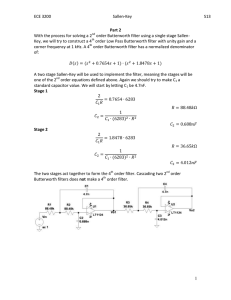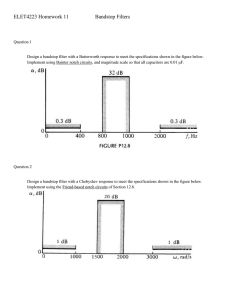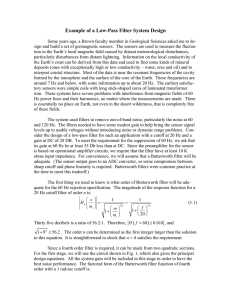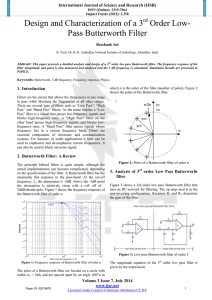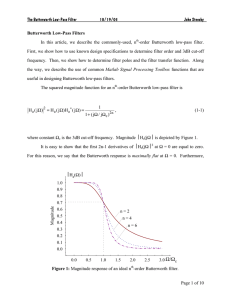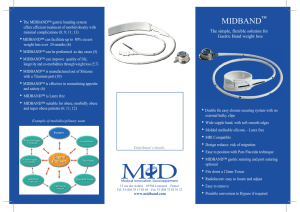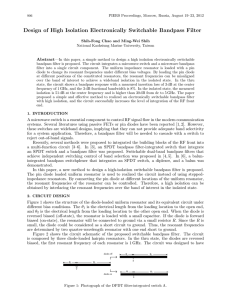# 7
advertisement
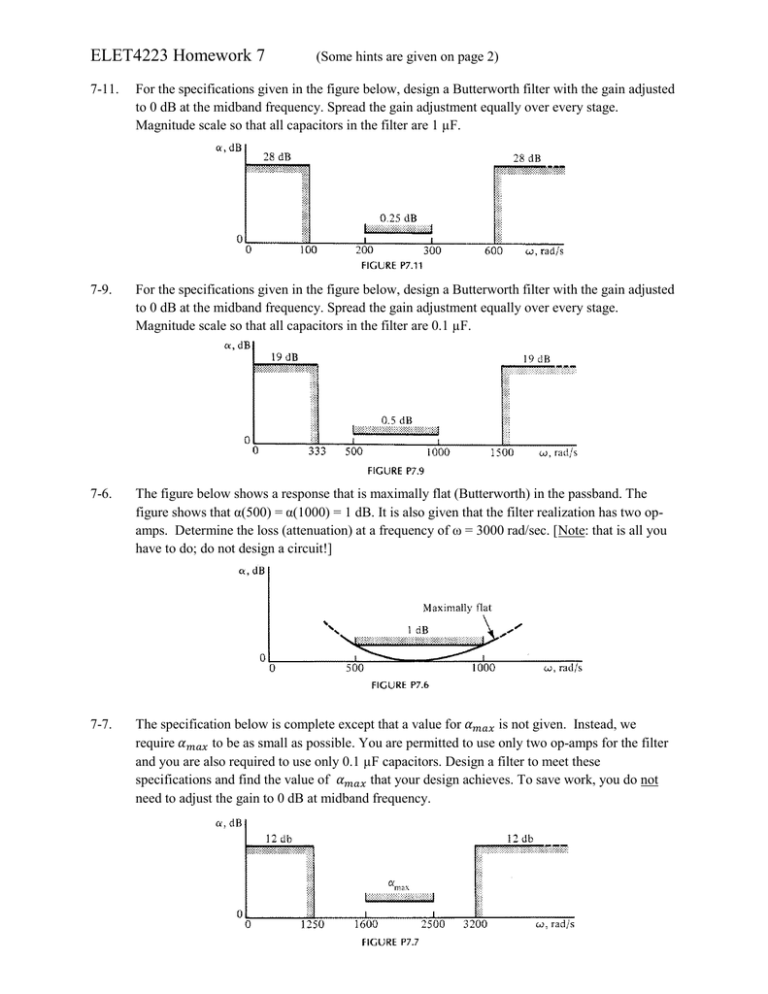
ELET4223 Homework 7 (Some hints are given on page 2) 7-11. For the specifications given in the figure below, design a Butterworth filter with the gain adjusted to 0 dB at the midband frequency. Spread the gain adjustment equally over every stage. Magnitude scale so that all capacitors in the filter are 1 µF. 7-9. For the specifications given in the figure below, design a Butterworth filter with the gain adjusted to 0 dB at the midband frequency. Spread the gain adjustment equally over every stage. Magnitude scale so that all capacitors in the filter are 0.1 µF. 7-6. The figure below shows a response that is maximally flat (Butterworth) in the passband. The figure shows that α(500) = α(1000) = 1 dB. It is also given that the filter realization has two opamps. Determine the loss (attenuation) at a frequency of ω = 3000 rad/sec. [Note: that is all you have to do; do not design a circuit!] 7-7. The specification below is complete except that a value for 𝛼𝑚𝑎𝑥 is not given. Instead, we require 𝛼𝑚𝑎𝑥 to be as small as possible. You are permitted to use only two op-amps for the filter and you are also required to use only 0.1 µF capacitors. Design a filter to meet these specifications and find the value of 𝛼𝑚𝑎𝑥 that your design achieves. To save work, you do not need to adjust the gain to 0 dB at midband frequency. Hints: 7-11 and 7-9 are straightforward bandpass Butterworth design problems. One of them has n=4 and the other has n=3. Make sure you do all calculations to LOTS of decimal places, because filter design generally (and the Geffe algorithm in particular) tends to be “numerically unstable”, which means that small errors in input numbers can result in big differences in calculated results. 7-6 is just a calculation, no circuit design needed. It will be easiest to get your answer out of the lowpass prototype rather than the bandpass circuit itself. 7-7 is almost a straightforward Butterworth bandpass design, except that you don’t get n from the formula, it is “given” in the wording of the question. Instead, you can use the “n formula” to calculate 𝛼𝑚𝑎𝑥 . Also, you are permitted to save some work by not doing the “gain adjustment”, i.e. no need to do the voltage divider thing.

